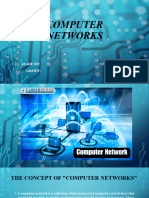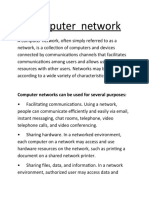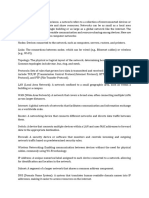A computer network is a system of interconnected computing devices that can communicate
and share resources with each other. These devices, which can include computers, servers,
printers, and other peripherals, are linked together using wired or wireless connections,
enabling them to exchange data and collaborate on tasks.
Detailed explanation:
Interconnected Devices:
The core of a computer network is the connection of multiple devices, allowing them to
interact and share information.
Communication and Resource Sharing:
Networks facilitate communication between devices, enabling users to send emails, share
files, access the internet, and use shared resources like printers.
Physical and Wireless Connections:
Devices can be connected through physical media like cables (e.g., Ethernet cables, fiber
optic cables) or wirelessly using technologies like Wi-Fi.
Protocols:
Communication between devices on a network is governed by protocols, which are sets of
rules and standards that define how data is transmitted and received.
Network Size and Scope:
Networks can vary in size and scope, ranging from small home networks to large global
networks like the internet.
Examples:
Examples of computer networks include local area networks (LANs) in homes or offices, and
wide area networks (WANs) like the internet.

































































